I recently received a royalty check on my book Charlie Chan at the Movies and realized that the start date on that project is now 30 years old. The book itself has only been out 26 years. It took a long time to write a book in those days when research materials were scarce and you typed everything on a typewriter. And then it was another year for the book to come out after the manuscript was accepted. That it’s still in print is remarkable, though I know it’s sure to reach its end fairly soon, which saddens me a little and make me contemplative. (The latter may also be a product of age.)
I suppose I should put forth a little history for the uninitiated — and they certainly exist, since I ran into one (someone I went to school with, in fact) just this morning. Charlie Chan was a fictional Chinese detective who worked for the Honolulu Police Department, who first appeared in Earl Derr Biggers’ 1925 novel The House Without a Key.This was filmed fairly quickly as a ten chapter serial with Japanese actor George Kuwa as Charlie. No prints are known to survive. Biggers’ The Chinese Parrot came out in 1926 and Paul Leni’s film version appeared the following year and while Kuwa was in the cast, it was a lesser role while the Japanese magician Kamiyama Sojin played Charlie. Again, there are no known prnts. Unfortunately, Biggers’ next book Behind That Curtain (1928) was completely reworked when it was filmed — as one of the stodgiest of all early talkie — in 1929, reducing Charlie (played by Korean actor E.L. Park) to a minor character in the last few minutes of the film. Naturally, it’s still around.
It was in 1931 — with a lot of help from unsung series architect Hamilton McFadden (who ended up playing bit parts in a couple of later entries) and star Warner Oland — that the series really starts with Charlie Chan Carries On (then Biggers’ new book). And guess what? Yep, it’s lost. In fact four of the first five movies in this set — including the talkie remakes (all with new titles) of the lost silents and Behind That Curtain — are lost. But the format was set and Charlie’s aphorisms — known as Chan-o-grams — became something of a fad. (Well, things like, “If befriend donkey, expect to be kicked,” are pretty hard to resist.) With the missing titles factored in Oland played Charlie 16 times for Fox Films before he died in 1938, whereupon Sidney Toler inherited the character for 22 movies. The first 11 were also for Fox, but when the prospect of an Asian detective (even if he wasn’t Japanese) seemed risky to them, they shut the series down. Toler bought the rights and sold little Monogram Pictures on the idea for the next 11. Again, death intervened and in 1947 Roland Winters played Charlie — and just when the studio was preparing to move the series to England (where they had assets they couldn’t take out of the country), Britain devalued the pound and the series ended in 1949. But, hey 44 movies is a pretty good run.
I don’t know how old I was when I discovered Charlie Chan. I remember the first Chan movie I saw was Dead Men Tell (1941). And I remember that I at first resented it because this new “Charlie Chan Theater” had replaced “Tarzan Theater” on Saturday afternoon TV. I almost didn’t watch it in fact. It took my parents coaxing me to try it. Obviously it took — and Tarzan long ago fell off my radar. One film led to another and to reading the newly reprinted Charlie Chan novels by Earl Derr Biggers. I see these are now collectors’ items. Oh, well, if you live long enough you’ll not only see your childhood relegated to that — sometimes it even finds its way into antique shops.
Time passed and my interests broadened. I never really left Detective Chan of the Honolulu Police Department behind, but I freely admit that he was rarely at the top of my thoughts. Oh, I’d never miss a Charlie Chan movie on TV — and I even bought a nice 16mm print of Charlie Chan at Treasure Island (1939) — but I wasn’t sitting around thinking, “One day I’m going to write a book about the Charlie Chan movies.” In late 1984 my first book, Ken Russell’s Films, came out, but I’d been considering new projects for months by then. No, Charlie wasn’t an immediate choice — until I was handed a piece of inside information concerning the fact that the author Citadel — the “Films of” people — had signed to do a Charlie Chan film book was not going to do it. It wasn’t just that this was something I was reasonably qualified to do and would like to do. No, there was more. I had, like many of my generation, grown up on the Citadel “Films of” books. Surely, you know them — oversized volumes filled with photos. Some of them were good — especially those written by William K. Everson or DeWitt Bodeen. A lot of them were cut-and-paste jobs made up of (often inaccurate) plot synopses taken from studio publicity packs and trade papers, combined with old newspaper reviews from what could hardly be called the golden age of criticism. However, for many of us this was our first taste of books about movies. The idea of having a Citadel book of my own was mighty appealing. So I put together some sample chapters and an outline and sent it on its way.
As it turned out, my inside information was so inside that Citadel didn’t know it, and they turned me down because they had (they thought) their own Charlie Chan book in the works. Wasting no time, I sent the proposal to McFarland Publishers — a growing “scholarly” press in Jefferson, North Carolina. I knew this would be a trade-off. The book would be little promoted outside of libraries and its chances of being in book stores that weren’t movie specialty shops in places like New York, Los Angeles, and London were non-existent. Plus, at that time their standard approach limited a book to 40 photos. I argued for 44, since that was the number of movies covered, and in the end was allowed 46. No sooner had I signed the contract than Citadel learned their book wasn’t happening and wanted mine. I regretted it at the time. Now, I’m glad it worked out the way it did. The Citadel book — had it happened — would have had less text (but more photos) and would have been out of print long ago.
What I hadn’t reckoned on was the fact that I’d become “the Chan guy.” Now, there’s nothing wrong with that — and since no one had ever written a book about Charlie Chan movies, it was to be expected. But I had no idea that my little book would some kind of long-felt want. I certainly never expected it to end up being a Movie Book Club selection — twice — but I was amused to find myself referred to as “master detective Ken Hanke.” In fact, that was kind of cool. But I’d be lying if I didn’t note that I was feeling a little hemmed in by all this, since there was, I assure you, more to me than Charlie Chan movies — a fact that actually disconcerted some of the more hardcore fans.
Goodness knows, I didn’t expect to end up being interviewed on NPR and on some cult radio show that combined fixations on old movies, the Beatles, and UFOs. (I was followed by Whitley Streiber, who, I was assured, was a big Charlie Chan fan.) Above all, I never expected to find myself at the center of a controversy. Now, I knew there was a certain politically incorrect aspect to the films that grew primarily from the fact that Charlie was portrayed by a Swede (Oland), one guy from Missouri (Toler), and one from Boston (Winters). I had addressed this in the book and discussed it (also in the book) with Keye Luke, who played Charlie’s No. One Son, Lee Chan. Considering that Charlie Chan was such a breakthrough — as not only the hero, but the smartest guy in the films — in an era of Asian villains and the “Yellow Peril,” it seemed kind of a non-issue to me. (And that’s without factoring in the number of Asian actors the series gave employment and exposure to.) In fact, Oland — whose features were naturally Asian-looking — came to Charlie Chan after a three movie stint at Paramount playing the insidious Dr. Fu Manchu.
All this changed when the Fox Movie Channel planned to show all the existing Charlie Chan movies they owned. Suddenly, it was a big issue, and I ended up in a debate with an activist on a radio show hosted by Alan Colmes. (I’m sure Carmike Cinemas had no clue that one of its managers spent an hour locked in the office and tying up their phone to engage in this debate. Oh, well.) I probably would have been terrified if I’d had any idea who Colmes (who was on the pro-Charlie side) was, that the program was national and was going out live. I got the impression that my “opponent” had never seen one of the films, and was basing it on parodies he’d encountered. It ended with nothing resolved, which wasn’t surprising, but maybe me countering his claim that people could watch these movies on DVD by pointing out that this just wasn’t true helped to change that.
The next time I found myself contacted on the topic was a request to be interviewed for the extras on the first batch of Fox DVDs. The producer, John Cork, and his crew interviewed me on camera for a couple of hours at the Fine Arts one snowy morning. It was fun — apart from being perched on a chair that was slanting backwards so the camera could take in the proscenium arch at the theatre. I expected nothing more to come of it. So it was no little surprise to find John Cork wanting a return session — actually, two — doing three audio commentaries. Seems that the very thing that made me feel a little uncomfortable at the center of Chan fandom — that I didn’t begin and end with Charlie Chan — actually played in my favor here, because I could put the films in the larger context of movies or that era. (It may have helped that I clean up OK and am reasonably well-spoken on occasion. Quit snickering.) It was also kind of nice — after years of things like Bob Dorian introducing Charlie Chan movies on AMC (back when it was good) cribbing everything from my book — to get a little recognition. Better still, it led to me being in the documentary that accompanied the release of that big Fox-Murnau-Borzage box set, even if I was buried in the raft of interviewees.
So now, realizing the book’s life is coming to a close, I look back on it with mostly nostalgia — and a sense that by now the old boy has certainly repaid me in various ways for anything my book did for his legacy. And, in all honesty, I think it may be my best-written book — and unlike my other books, it’s not out of date. There are many Ken Russell movies that came after my Russell book. The same is true of the Tim Burton book, and even the one on horror movie series. But Charlie’s story is — as he said of his determination to go home in one movie — “firm like Gibraltar Rock.” Nothing has really changed since 1989 and it’s not likely to.



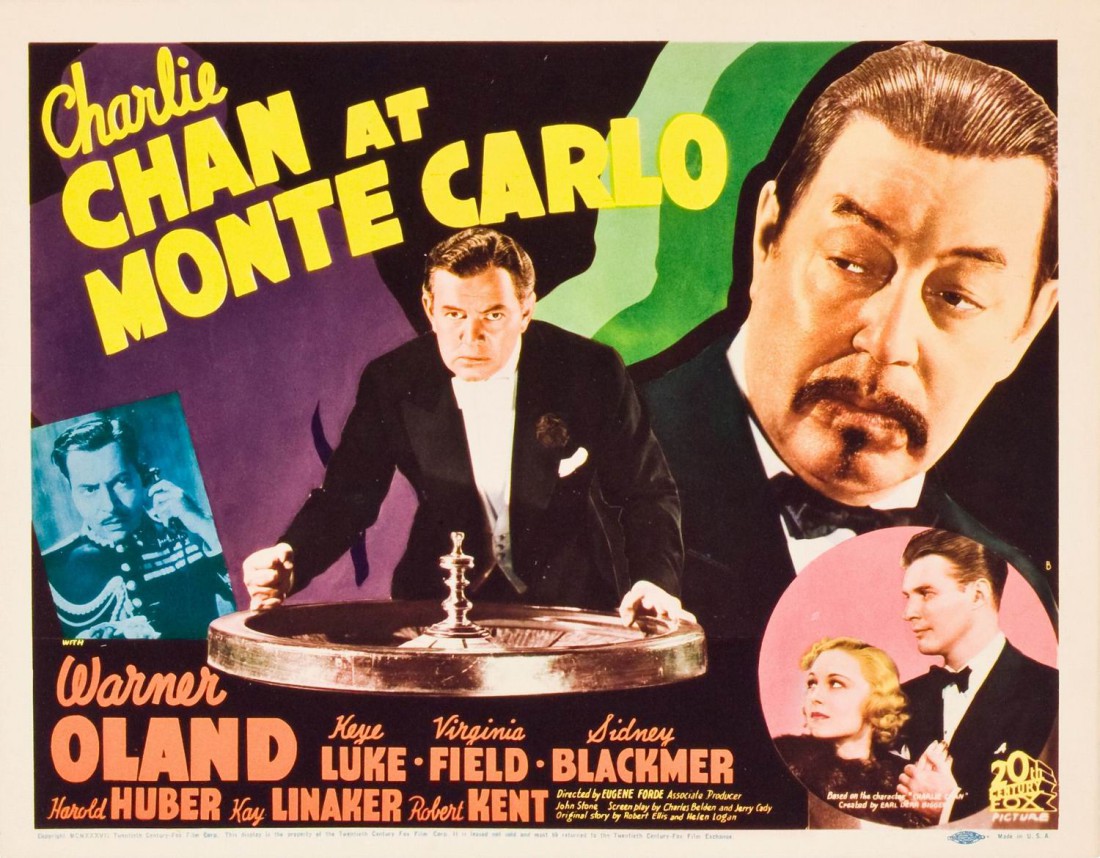

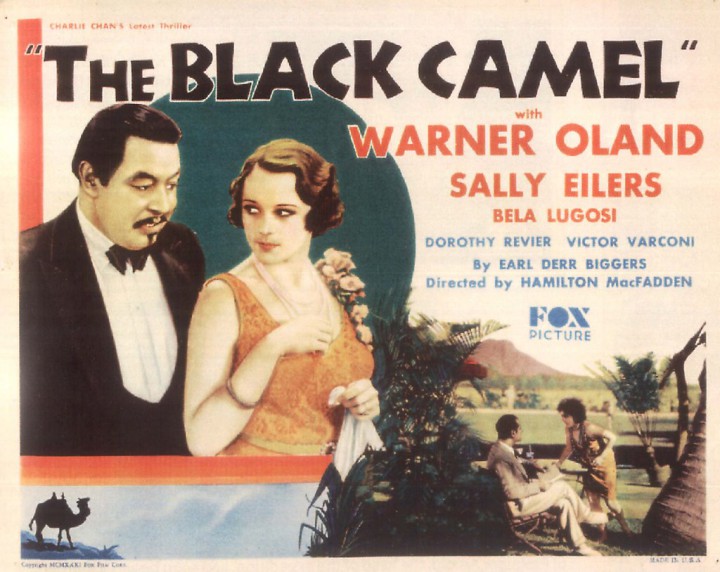




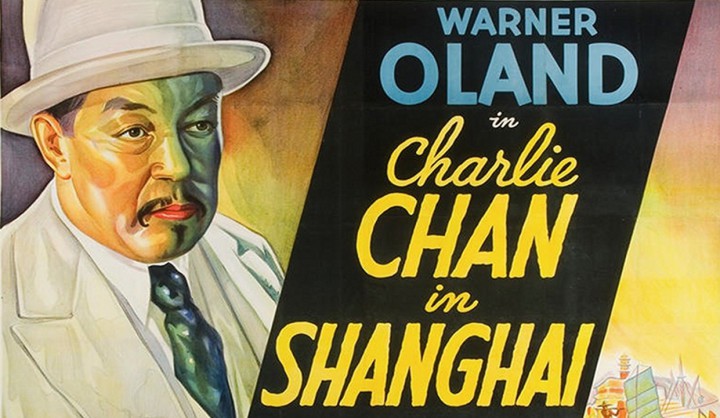
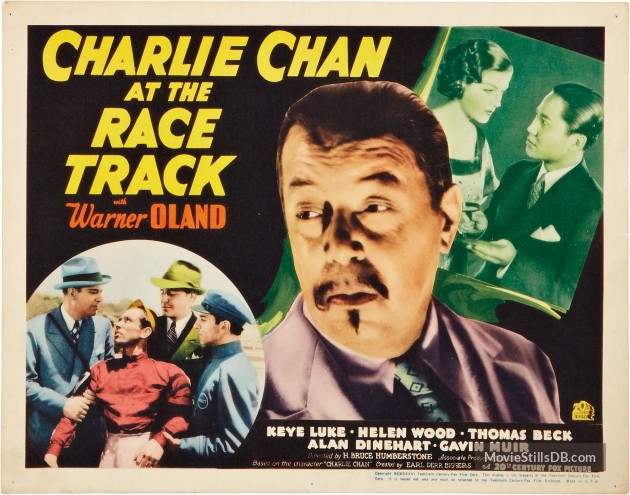
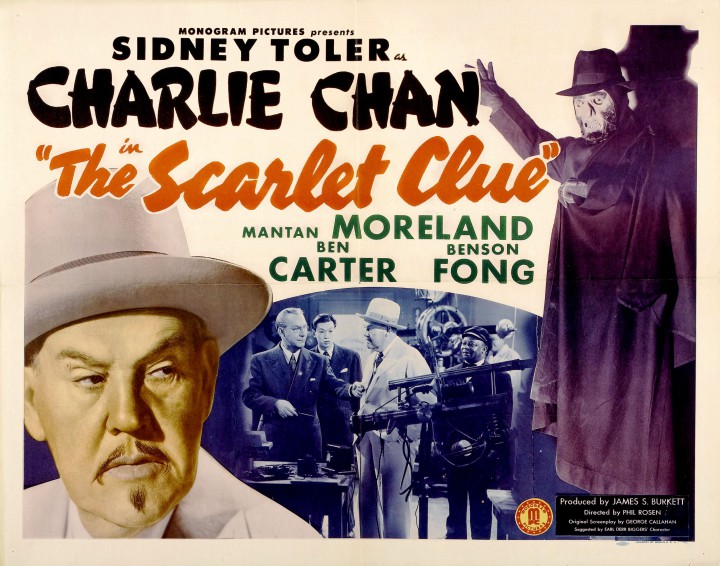

That was a perfect article. I loved every bit of it. While I’ve only ever been a casual fan of Charlie Chan, Mr. Wong, or Mr. Moto; I can empathize with you on nearly every point you made. When the time comes that CHARLIE CHAN AT THE MOVIES is out of print, I hope you will either find a new home (Bear Manor?) or opt to self-publish through your own imprint (Cheeky Monkey, perhaps) distributed by Lulu and available on Amazon and Barnes and Noble. It really is little more than a few minutes effort to do so and the book deserves to stay in print.
Thank you, Bill. We shall see.
Great article! I agree with you on the “cultural appropriation” criticism of Charlie Chan. Not only is he the hero and the smartest guy in the room, but he’s also a devoted family man whose wry comments about his children belie his clear affection for them. As someone with two (now gone) immigrant family members (Russia and Sicily), I see Chan’s accent and attitude as that of a first generation American, and his kindly bafflement at his fully Americanized children as a part of the immigrant experience.
BUT — the character played by Mantan Moreland is another matter, clearly a minstrel show stereotype used to pad out the movies I’ve seen for comic effect. Sometimes Moreland manages his unfortunate lines with dignity; other times, not so much. I’d like to know your take on Moreland.
Mantan is a thorny subject for some, but I have loved the man since I first saw The Strange Case of Dr. Rx, which was years before I ever saw him as Birmingham Brown. Studios loved him because he carried his material with him, which is to say whatever was written for him was not what was delivered. He rewrote or ad-libbed a lot of what made it onto the screen. You have to put his shtick into context. He’s doing the same thing in the Chan pictures that he did in his “race” pictures (movies specifically made for black audiences) where he was the star. Part of the reason he was even in the Chans was because Monogram could book them into black theaters based on his name and presence. The scared routine — which is what most people think of when they talk about the stereotype (you know, the “feets do yo’ stuff” business — came with the territory, as much for the type of movie as anything else.
What Mr. Maynard says (below) is also very true, though I’d say the “Incomplete Sentences” routine (which Mantan did a variation on in a Midas Muffler commercial about 1970) is better than “Who’s on First.” The best versions of it appear in the 1946 Chan film Dark Alibi.
Here’s a link to the Midas ad.
https://www.youtube.com/watch?v=i6rZiT8DL_s
Thanks, Ken and Bill. Very clear and convincing. I remember that Midas ad! Did you know that the Wikipedia article on Dark Alibi contains the movie in its entirety?
No, I didn’t, but I bought a copy the week it came out since it’s probably my favorite of the Monogram Chans.
While I’m familiar with Mr. Hanke’s views on Mantan Moreland from his book, I would add that a routine such as “Incomplete Sentences” with Ben Carter is a classic piece of comedy writing and a well-timed performance every bit as good as “Who’s On First.” The routine was not demeaning in any fashion and universal in its appeal. If nothing else, the studio and the Chan films provided a showcase and much-needed performance record for routines by early African-American performers that would otherwise be lost to time.
I would give anything to hear you on Alan Colmes debating somebody about Charlie Chan.
You’d have to go back quite a few years now.
Hi Ken,
My 81-year-old mom has a blog at http://78mph.com where she’s currently writing about her family history. Turns out, Vernie was one of her cousins. Would she be able to use one of the images from this page on her blog? She will certainly link to your page in the story. Her name is Maureen O’Shea and I help her with her blog.
Thanks so much.
Colleen
Well, I don’t own the rights to any of those images, so I can’t grant rights, but I really don’t see why she can’t use one. They’re all publicity material that was generated by the studios for the purpose of reproduction.
Thanks, Cranky Hanke!
I spent a few hours a couple months ago watching some Charlie Chan movies on YouTube. They were brilliant and he had quite the character, didn’t he? I loved the relationship he had with his son, and how Charlie Chan was always one step ahead…